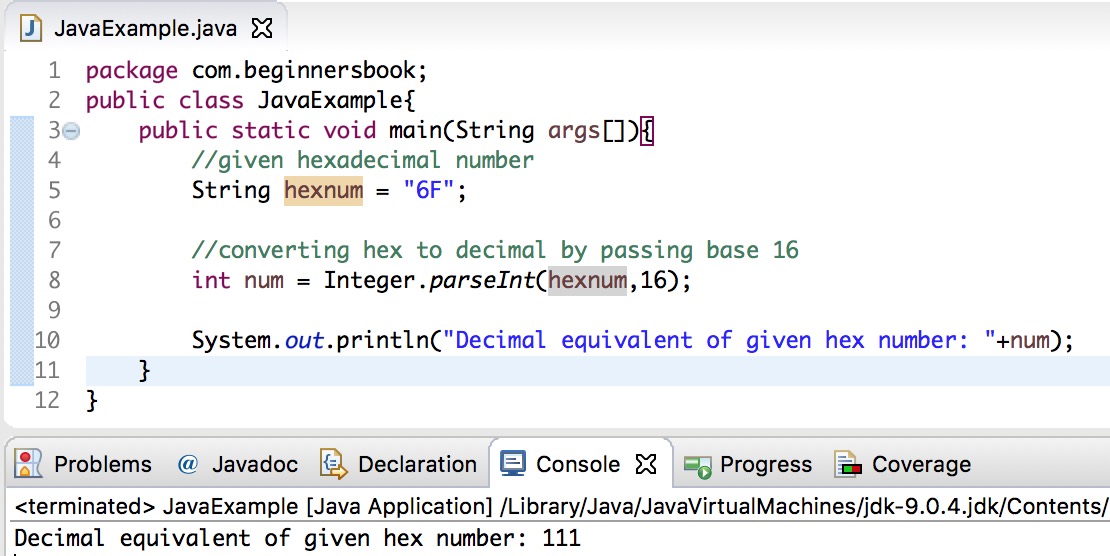
All we have to do is that we will need to import the literal_eval function from ast.

Then we can use the hex() function to get the Hexadecimal value. Using the literal_eval from the ast library, we can easily get the string and convert it to an integer. Integer to Hex: 0xabc Using ast.literal_eval() function: For example, the color value produced by color(0, 102. Print("String to Integer:",convert_string) Converts an int, byte, char, or color to a String containing the equivalent hexadecimal notation. Let us see it in action.Ĭonvert_hex, convert_string = get_hex(userstring) We will then convert the integer value to hexadecimal using the function hex(). So when we get a string, we will initially convert the string to an integer. Once we have the integer, we can use the inbuilt hex() function to convert an integer to a Hexadecimal number. If you would wantto know the sum of all bytes in the string, do sth like: int sum 0 for (int i 0 i < strlen (str) i++) sum + (str i - '0') Serial. The amount of bytes in a string is just the number of characters, strlen () will give you that number. Using int(string, base=16), we can convert the string to an integer with base 16 (Hexadecimal). convert a string like hello world to hex and get the amount of bytes. If you are relatively new to Python, you might want to look at our tutorial on converting string to lists in Python 3. In this post, we will learn how we can convert a string to a Hexadecimal number.

Using int() function and by importing literal_eval from the ast Python module. We have two methods to convert a python string to a Hex value. The parseInt(string, radix) method can only convert the String type, and returns NaN(non-numeric) for other types string(required argument) represents the character to be converted radix(optional argument) represents the system to be converted, its value is between 2 ~ 36, if omitted, it will be converted to decimal.To convert a string data type to an Hexadecimal number format in Python 3.X. Return unescape(str.replace(/\\/g, "%")) First replace all \ in the string with % using replace(), then use unescape() to encode all characters (Unicode characters) in %uxxxx format with hexadecimal Unicode characters in xxxx format instead. Mainly achieved through the replace() and unescape() methods. Then use toString(16) to convert Unicode value to hexadecimal, and finally use slice(-4) to intercept four digits from right.Īrr = ( "00" + str.charCodeAt(i).toString(16)).slice(-4) ĬonvertStringToHex(str) //Output: \u0073\u0074\u0072\u0054\u006f\u0048\u0065\u0078 A real UTF8 string has characters with 1, 2, 3 and 4 bytes. C++ provides a std::hex I/O manipulator that can modify the stream data’s number base. Here is my take: these functions convert a UTF8 string to a proper HEX without the extra zeroes padding. In this example also, we are going to use the std::hex I/O manipulator. Using std::stringstream and std::hex to Convert String to Hex.

The conversion is mainly achieved by the charCodeAt() method, which returns the Unicode value of a characters, which is used to specify the index position. Hexadecimal Equivalent of String is :446576456e756d2e636f6d. one, first converts the string to Unicode characters, then converts to hexadecimal, and finally intercepts four digits the other, directly convert with parseInt(), but can only convert String type.ġ. There are two ways to convert a string to hexadecimal in javascript.
#Convert string to hex how to#
Let's discuss how to convert a string to hexadecimal and how to convert hexadecimal to a string. So, to convert the string into its hexadecimal version follow the below steps: Approach: Firstly, we will take the string from. Basically, hex can convert every integer value of the stream in to hexadecimal base. Once again, if the DBCS character set is also encrypted, it is even more necessary to convert to hexadecimal. Hex is an I/O manipulator that takes reference to an I/O stream as parameter and returns reference to the stream after manipulation. After several conversions between them, you may not see the original form. When you want to hide the characters, you can convert them into hexadecimal or binary.


 0 kommentar(er)
0 kommentar(er)
